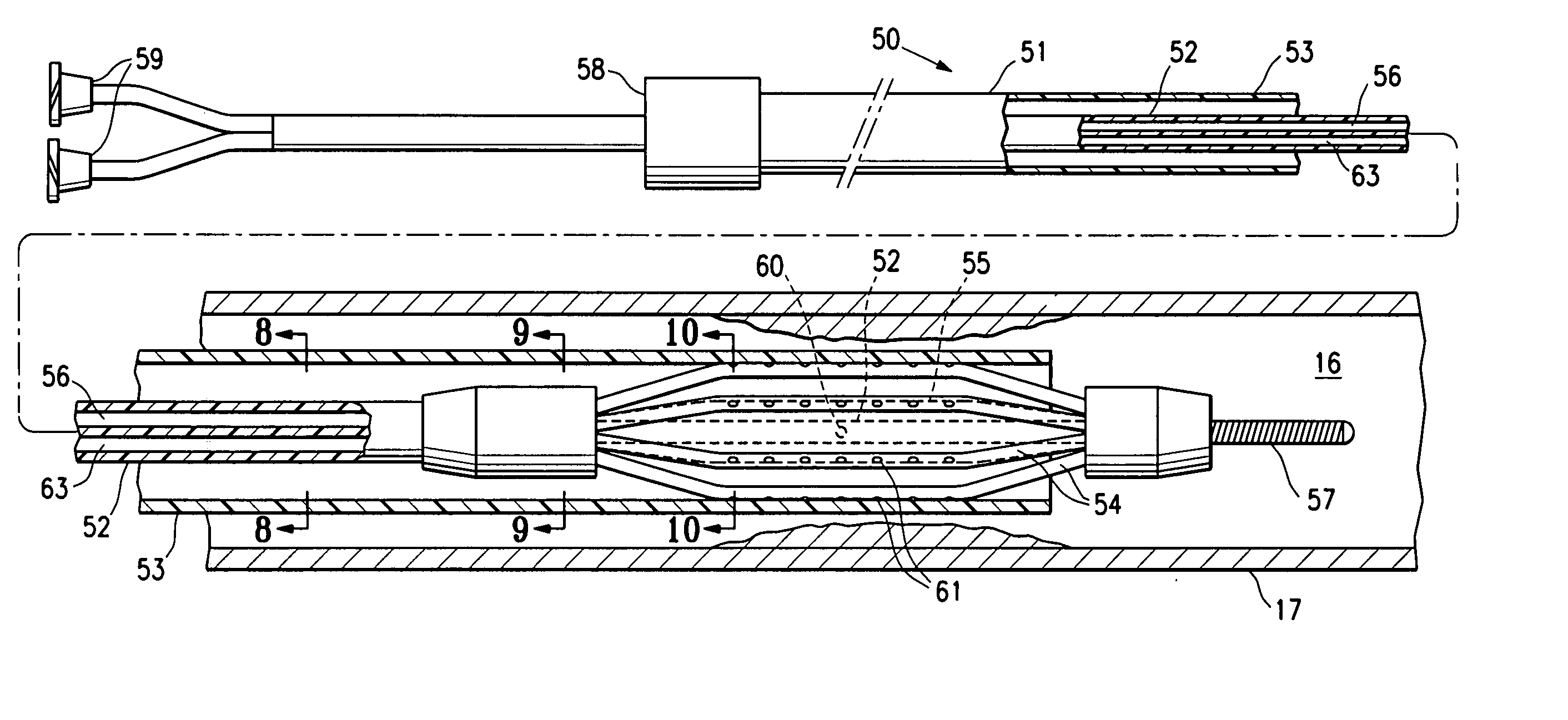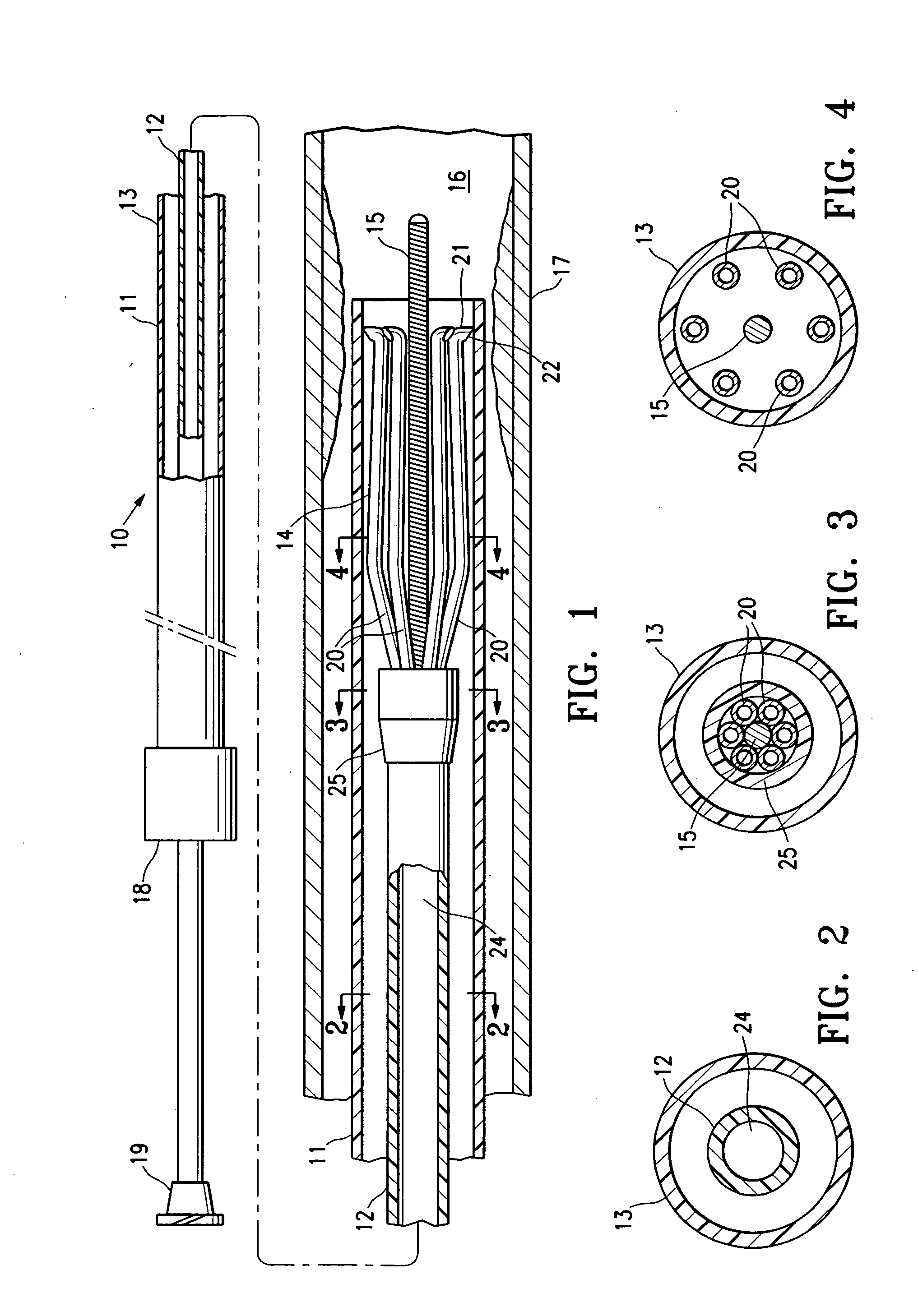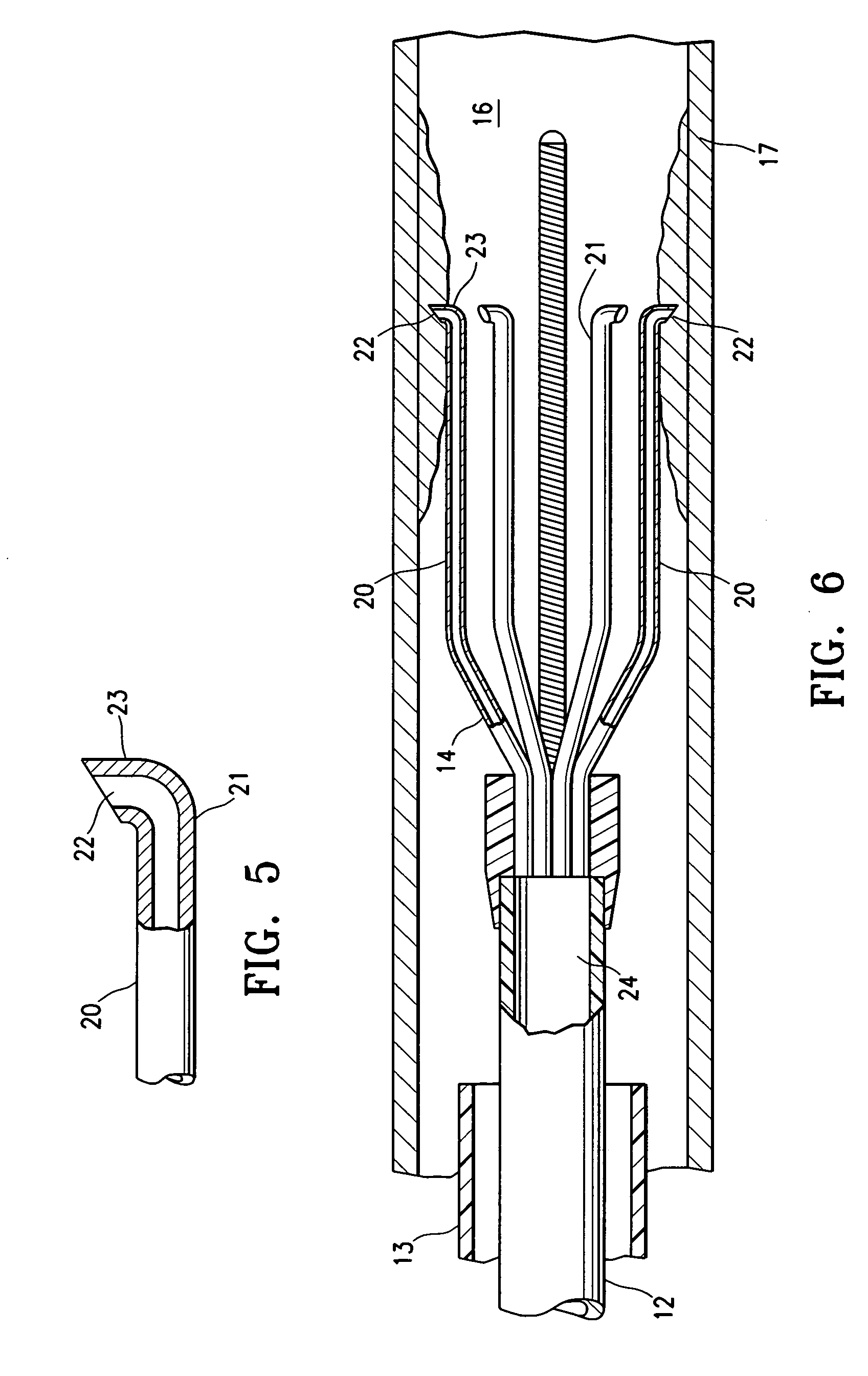Devices and methods for intravascular drug delivery
a technology of intravascular drug and device, applied in the field of medical devices, can solve the problems of reducing the efficiency of local intravascular drug delivery, maximizing the amount of drug taken up and retained, and drug washout, so as to improve the surface contact area, minimize the injury to the vessel wall, and optimize the effect of agent delivery
- Summary
- Abstract
- Description
- Claims
- Application Information
AI Technical Summary
Benefits of technology
Problems solved by technology
Method used
Image
Examples
Embodiment Construction
[0025]FIG. 1 illustrates an elevational view, partially in section, of a catheter 10 embodying features of the invention, generally comprising an elongated shaft 11 having an inner tubular member 12 and an outer sheath member 13 slidably disposed on the inner member 12, and a self-expanding frame 14 is on a distal shaft section fixedly secured to the shaft inner member 12 and in a radially collapsed configuration slidably disposed in the outer member 13 of the shaft. A floppy tip distal guide member 15 such as a coil is secured at a distal end of the catheter 10 to facilitate maneuvering the catheter 10 within a patient's body lumen. In the illustrated embodiment, the distal guide member coil 15 has a proximal end secured to the distal end of the inner member 12 and a distal end located distal to the frame 14. In an alternative embodiment, the catheter is configured with a guidewire lumen therein for slidably advancing over a conventional guidewire. FIG. 1 illustrates the catheter 1...
PUM
 Login to View More
Login to View More Abstract
Description
Claims
Application Information
 Login to View More
Login to View More - R&D
- Intellectual Property
- Life Sciences
- Materials
- Tech Scout
- Unparalleled Data Quality
- Higher Quality Content
- 60% Fewer Hallucinations
Browse by: Latest US Patents, China's latest patents, Technical Efficacy Thesaurus, Application Domain, Technology Topic, Popular Technical Reports.
© 2025 PatSnap. All rights reserved.Legal|Privacy policy|Modern Slavery Act Transparency Statement|Sitemap|About US| Contact US: help@patsnap.com



